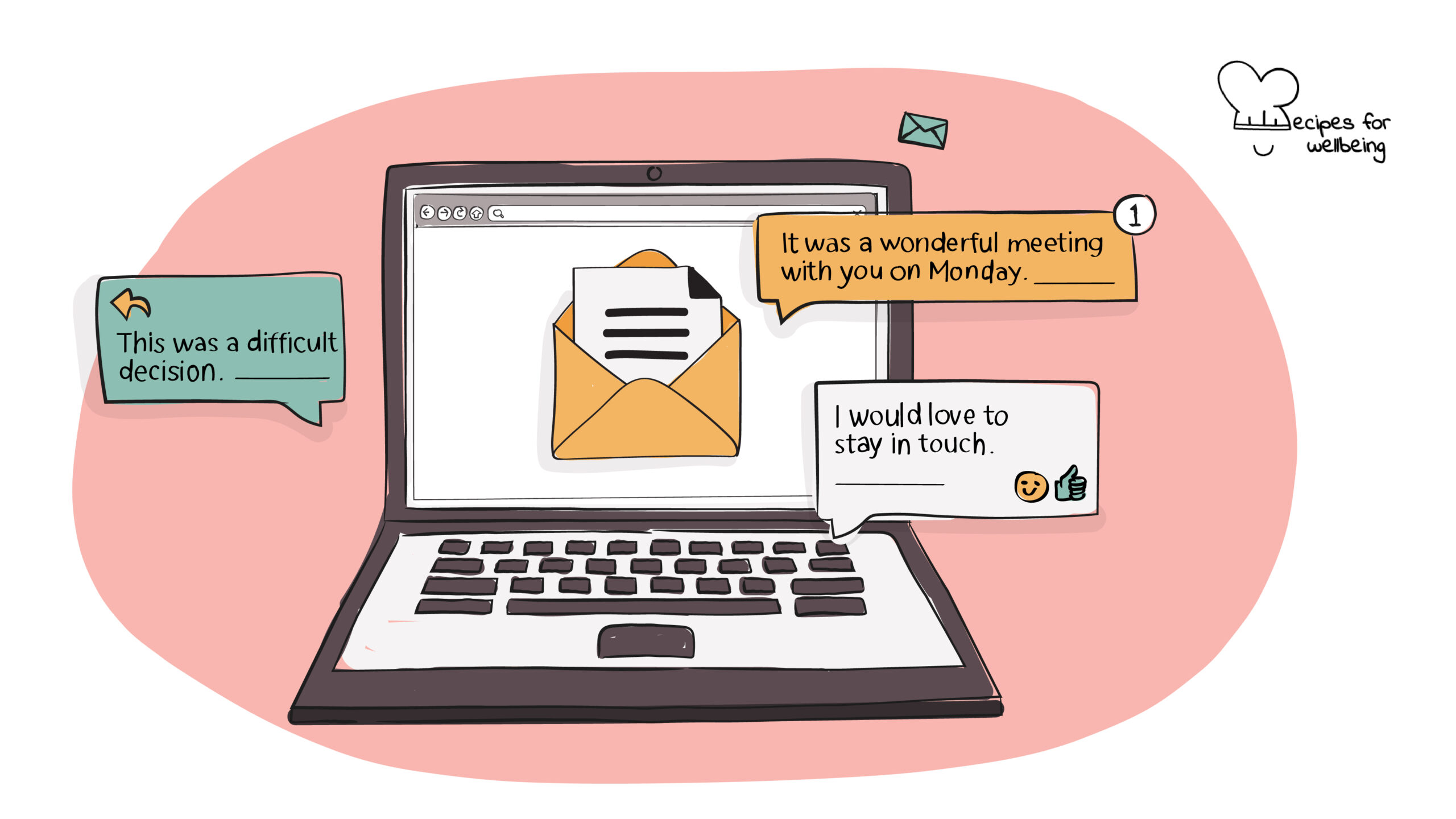
Respectful rejection letters
You are being presented with two choices: evolve or repeat. ―Unknown
👥 Serves: 1 person
🎚 Difficulty: Easy
⏳ Total time: 15 minutes
🥣 Ingredients: Computer, email
💪 Nutritional values: Calmness, Professionalism, Organisation, Flexibility, Open-mindedness

Respectful rejection letters
📝 Description
Craft a respectful rejection letter.
Rejection is tough: for the person on the receiving end and the person doing the rejecting. However, it is a natural part of the world of work and how you inform a candidate of a decision says a lot about the values and conduct of the organisation. It is very useful for candidates to receive a letter that is respectful, constructive, and considerate. People talk, and an unprofessional rejection letter can lead to a damaged reputation for the organisation. Plus, a positive rejection letter can help keep the door open for a strong candidate that has potential for future opportunities.
This recipe has been created by our wellbeing content writer collaborator Marissa Del Mistro.
👣 Steps
Step 1 – Don’t delay sending (2’)
Rejection is never easy! However, it is good practice to send the rejection letter as soon as an internal decision has been made, as it helps candidates know where they stand and shows that you respect their time. Between 3–5 working days is a reasonable timeline. It is long enough that the candidate feels that they were adequately considered, but still respectful.
No matter which day of the week you select to send the rejection letter, someone will likely be disappointed and hurt. For example, if you send it on a Friday, it has the potential to ruin someone’s weekend. The same goes for a Monday, as the news may ruin someone’s week!
That being said, do be sure to send it during regular working hours (whatever is regular for your organisation). It is also good practice to avoid sending it on major holidays (or cultural holidays) such as Christmas or Eid.
Ultimately, you, as a hiring manager, are not responsible for managing the candidate’s emotions – especially since every candidate will be so different. Some may appreciate you waiting to send a rejection on Wednesday rather than Friday, whereas others just want to know! The most important thing is to send the letter.
Step 2 – Provide a reason behind the decision (2’)
From the job seekers’ perspective, it can be frustrating to get a rejection letter that is void of details. Instead, include information without going into too much detail. Some examples are:
- The candidate is not qualified enough.
- The candidate is overqualified.
- The role is no longer available.
- An internal candidate was selected.
Step 3 – Provide feedback for the candidate – and watch your language! (10’)
When delivered very respectfully, feedback can be valuable for candidates. Feedback should focus on what the candidate can learn, and brief advice for future job applications and interviews. It is good practice to include a few compliments on things that the candidate did very well in their interview.
When delivering feedback, be honest, compassionate, direct, and to the point. Some examples are:
- “It was a wonderful meeting with you on Monday. We have decided to move forward with another candidate. Your experience and education seemed like a great match, but we do feel like nerves might have gotten the best of you.”
- “Thank you for coming in yesterday, we enjoyed meeting you. We would like to inform you that at this time, we are moving forward with another candidate. We enjoyed hearing about your experiences with ______, but we are looking for someone with more experience using ______.”
- “Thank you for your time last week. Since a significant portion of this role is spent networking, we decided to move forwards with a candidate that had more practised communication skills. Do not hesitate to apply again after you have obtained formal experience in this area.”
- “My team and I enjoyed meeting you. At this time, we are moving forward with another candidate. This was a difficult decision and you did nothing wrong in the interview. I would love to stay in touch with you and encourage you to apply to the next role you are interested in from us! Would you be open to connecting on LinkedIn?”
When it comes to language, be as formal as possible. Replace all abbreviations and short forms such as “you’re”, “ASAP”, “they’re”, “I’m”, etc. for their long form and ensure that all grammar, punctuation, and spelling is correct. This is to ensure professionalism and so that nothing can be misinterpreted.
Step 4 – Thank the candidate and wish them well (1’)
Be sure to sincerely thank the candidate for considering the organisation and that you appreciate their time in applying. Offer well wishes for their continued job search. This step is very important!

